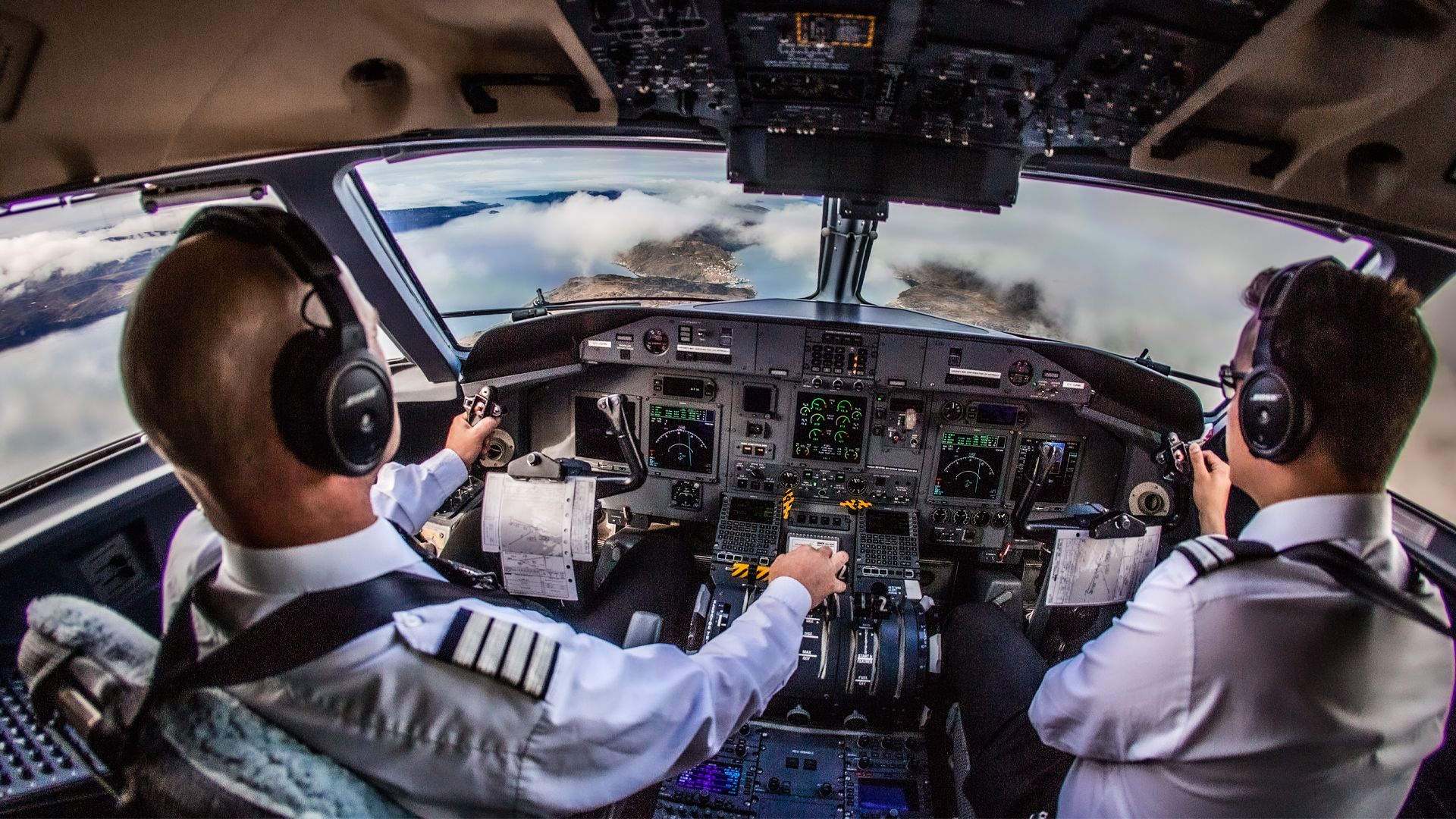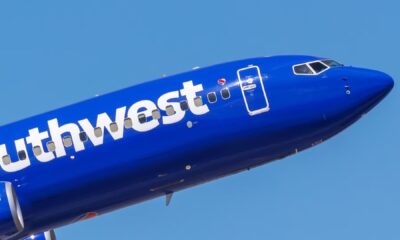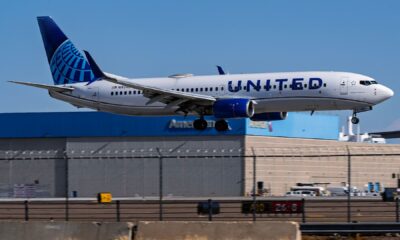World
Why Pilots Fear the ATC Message That Signals Trouble

Pilots face significant anxiety upon receiving a specific message from Air Traffic Control (ATC) during flight. When ATC instructs a pilot to “copy a phone number,” it signals a potential violation of aviation regulations—known as a pilot deviation (PD)—that warrants further investigation. While this does not typically lead to immediate arrests, it initiates a process that can have serious repercussions for the pilot’s certification and career.
The communication usually involves an ATC supervisor or manager discussing the incident that occurred during flight. This conversation may range from a simple instructional lecture to a situation that escalates to formal action by the Federal Aviation Administration (FAA).
Understanding Pilot Deviations
Pilot deviations can arise from a variety of mistakes made during flight. These errors may include mishandling the aircraft, not adhering to airspace regulations, or exhibiting carelessness. Common examples of pilot deviations include:
– Deviating from assigned altitude
– Entering controlled airspace without clearance
– Violating temporary flight restrictions (TFR)
– Straying from the designated course or heading
– Exceeding speed limits for specific areas
– Operating under visual flight rules (VFR) when conditions necessitate instrument flight rules (IFR)
– Failing to respond appropriately to ATC instructions
In every instance, the controller must document the incident and provide the pilot with a phone number to discuss the situation after landing. A formal review process often follows, which can significantly impact a commercial pilot’s employment prospects.
The request for a phone number creates immediate stress for pilots, who may not even be aware of any infractions. Many compare the experience to hearing a supervisor say, “we need to talk,” underscoring the uncertainty and concern that accompanies such communications.
Evolving Safety Measures
Historically, the FAA employed a more punitive system, which increased fear among pilots. Over time, however, the FAA has developed a “compliance program” that emphasizes education and prevention for honest mistakes. Pilots are encouraged to file reports with the National Aeronautics and Space Administration (NASA) as part of the Aviation Safety Reporting System (ASRS) after any incident. This process often mitigates penalties, allowing for a resolution without further action against the pilot, earning the ASRS the nickname of a “get out of jail free card.”
The rationale behind using a phone number is to facilitate a longer and private discussion away from the busy ATC frequency, which must remain available for urgent flight instructions.
Two primary categories characterize pilot deviations: airborne incidents and surface incidents. The most common errors arise from a failure to comply with ATC instructions, often due to distractions or lapses in situational awareness.
Airborne vs. Surface Deviations
According to data from My CFI Book, airborne incidents account for approximately 77% of total pilot deviations, while surface deviations make up the remaining 23%. Airborne deviations typically involve mishandling the aircraft or failing to operate within established airspace limits. Although surface deviations occur less frequently, they can have more severe consequences, particularly in the case of runway incursions, which can result in catastrophic outcomes.
Runway incursions represent the most critical type of service deviation, occurring when an aircraft enters a runway surface without ATC clearance. Causes may include miscommunication, unfamiliarity, or distractions during taxiing. Pilots can also face penalties for crossing a runway hold short line or moving through taxiways without explicit ATC approval.
Consequences of Pilot Deviations
The repercussions for pilot deviations can be serious, ranging from remedial training to certificate revocation. Specific penalties include:
– **Remedial Training**: Pilots may be required to undergo additional instruction with a certified flight instructor to rectify the identified issue.
– **”709 Ride” Re-examination**: The FAA can mandate a special flight test, and failing this exam could lead to the immediate revocation of the pilot’s certificate.
– **Certificate Suspension**: The FAA may suspend a pilot’s certificate for a set period, prohibiting them from exercising their flight privileges during this time.
– **Certificate Revocation**: Revocation is typically reserved for egregious violations or repeated offenses that pose a direct threat to aviation safety.
– **Civil Penalties**: The FAA has the authority to impose fines that can reach up to $50,000 for individuals.
– **Criminal Prosecution**: In severe cases, such as operating under the influence of drugs or alcohol, pilots may face criminal charges.
Altitude violations during IFR conditions are prevalent forms of pilot deviations. These include climbing or descending without ATC clearance or failing to maintain the assigned altitude due to distractions or miscommunication. Breaching controlled airspace, particularly around sensitive government facilities, can lead to fighter jets being scrambled for interception, significantly escalating the potential legal consequences.
Ensuring Safety through Vigilance
While only one pilot typically operates the aircraft, the non-flying pilot plays a crucial role in cross-checking actions and decisions. This collaborative vigilance helps prevent even minor errors that could lead to serious incidents. Crew members continuously monitor instruments, navigation, and ATC communications to ensure that everything aligns.
During critical phases of flight, such as takeoff and landing, non-essential conversations cease in the cockpit. Flying below 10,000 feet is also considered a critical phase when the cockpit environment must be sterile to maintain focus and minimize distractions.
Pilots are trained to communicate clearly and confirm their actions. They may say, “I’m about to cross the hold short line; is that correct?” to ensure no avoidable mistakes occur. All ATC clearances are read back verbatim, adhering to a “closed loop” communication system fundamental to aviation safety.
Maintaining Skills in an Automated Era
Despite the use of autopilot systems, pilots remain actively engaged in managing flight operations. Autopilot serves as a tool to assist pilots, not a replacement for their expertise and judgment. Continuous monitoring and coordination with ATC are essential for safe operations.
Awareness of potential over-reliance on automation is crucial, as it can lead to skills degradation among pilots, increasing accident risks. The National Business Aviation Association (NBAA) highlighted this issue in a 2013 report, noting that while autoflight systems enhance safety and management, they do not reinforce manual flight skills.
Ultimately, aviation remains one of the safest modes of travel, with crews trained to high standards of professionalism and skill, ensuring the continued safety of the skies.
-

 Politics3 weeks ago
Politics3 weeks agoSecwepemc First Nation Seeks Aboriginal Title Over Kamloops Area
-

 World4 months ago
World4 months agoScientists Unearth Ancient Antarctic Ice to Unlock Climate Secrets
-

 Entertainment5 months ago
Entertainment5 months agoTrump and McCormick to Announce $70 Billion Energy Investments
-

 Lifestyle4 months ago
Lifestyle4 months agoTransLink Launches Food Truck Program to Boost Revenue in Vancouver
-

 Science5 months ago
Science5 months agoFour Astronauts Return to Earth After International Space Station Mission
-

 Technology3 months ago
Technology3 months agoApple Notes Enhances Functionality with Markdown Support in macOS 26
-

 Top Stories2 months ago
Top Stories2 months agoUrgent Update: Fatal Crash on Highway 99 Claims Life of Pitt Meadows Man
-

 Lifestyle3 months ago
Lifestyle3 months agoManitoba’s Burger Champion Shines Again Amid Dining Innovations
-

 Sports5 months ago
Sports5 months agoSearch Underway for Missing Hunter Amid Hokkaido Bear Emergency
-

 Politics4 months ago
Politics4 months agoUkrainian Tennis Star Elina Svitolina Faces Death Threats Online
-

 Politics4 months ago
Politics4 months agoCarney Engages First Nations Leaders at Development Law Summit
-

 Technology5 months ago
Technology5 months agoFrosthaven Launches Early Access on July 31, 2025



















